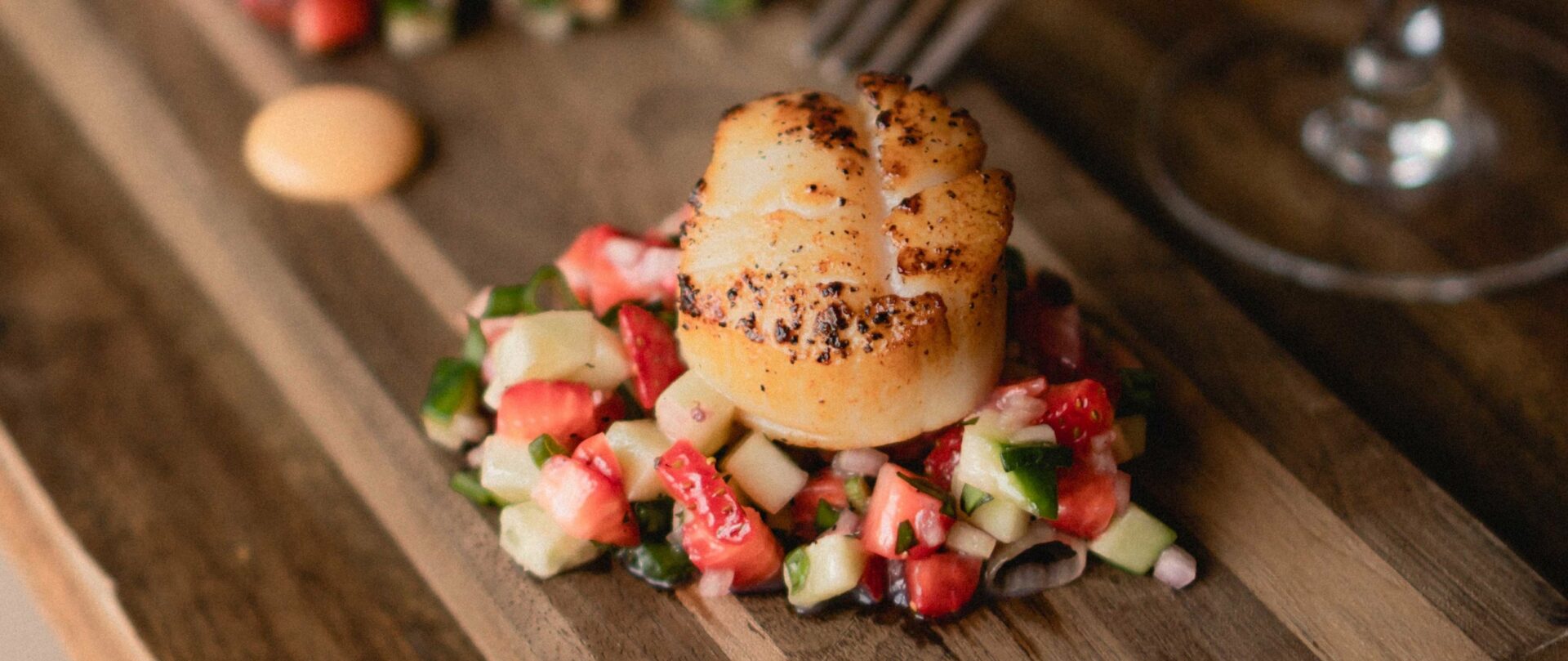It’s the night of October 31 on Nantucket Harbor. The ocean air is cool and the sun hours from rising, but island fishermen are already eagerly preparing to collect their bounty. Come 6:30 am the annual commercial harvest season of Nantucket Bay Scallops begins. And for five months, Nantucket’s fishermen brave the harsh conditions of late fall and winter for a share of the year’s takings.
One of those fishermen is island native Carl Sjolund, who has been scalloping in Nantucket’s bays for over half a century. Last year was a watershed year for Sjolund, who collected over 500 bushels (a standardized volume for scallops) during the previous season’s go-round. Considering the legal limit of five bushels per licensed fisherman per day (maximum two licensed fishermen per boat) and a penchant for fishing solo, Sjolund averaged four to five days per week reaping Nantucket’s prized fruits of the sea.
That’s even more impressive accounting for the challenges of icy waters, ever-changing sea conditions, declines in viable eel grass habitat (where bay scallops grow), and the sheer unpredictability of where baby scallops will take root.

Photo: Peter Morrison
“In general, it’s a crapshoot where we’ll find them around the island,” says Sjolund. “Every year is different. Last year, there were lots in the main Nantucket Harbor and between Madaket Harbor and Tuckernuck Island” – but that’s not necessarily an indication of where they’ll be found this season.
While Sjolund and his peers are busy scouting for and reeling in this year’s catch, nonprofit organization Nantucket Shellfish Association works with its constituents to ensure there will be a sufficient catch again next year. Once prolific in Nantucket’s waters, populations of bay scallops are now a fraction of not only last century but even the 1980s. Thanks to the Association’s environmental stewardship and actions, Nantucket now holds claim to “the world’s oldest continually sustained wild bay scallop fishery.”
“Nantucket Bay Scallops used to be called Cape Scallops,” explains Sjolund. However, the commercial bay scallop fisheries in Marion, Brewster, Chatham — all along the northeast coast — were completely depleted. And then there was one.
It was a combination of overdevelopment, pollution, and overfishing that led to the demise of the Cape Scallop. Through prudent management and practice, Sjolund and the Nantucket Shellfish Association are working to abate these anthropogenic environmental challenges on Nantucket plus deal with new and unexpected threats like invasive black stringy algae, which has infested Nantucket waters in the past five years.

Photo: Leah Cabral
The Association is tackling scallop survivorship from the demand side, too, ensuring that Nantucket Bay Scallops are properly labeled and consumers educated so that imposters aren’t sold as the real deal. According to the Association, “There are many varieties of bay scallops, but none is as sought after by chefs and gourmands around the world as bay scallops from Nantucket.”
It’s like distinguishing champagne from other sparkling wines. So to ensure authenticity, the Nantucket Shellfish Association has trademarked the Nantucket Bay Scallop and labels all shipments with tags and stickers for legitimacy. While a busy Michelin-starred restaurant in New York City may not take the time to verify the bay scallops as such, restaurants on Nantucket will do so with pride.
Mother Nature may be the ultimate decision-maker on this commercial scallop season, but thanks to intelligible fishermen like Sjolund and proactive measures by the Nantucket Shellfish Association, we’re hopeful that Nantucket’s renowned shellfish will remain plentiful for generations to come.
——
Tradewind operates daily shuttle flights to Nantucket from late April through early December, as well as private charter flights year-round. On the island, you will find seafood restaurants like SeaGrille open during the fall and winter, as well as Sayle’s Seafood market offering just-caught Nantucket Bay Scallops to take home.

